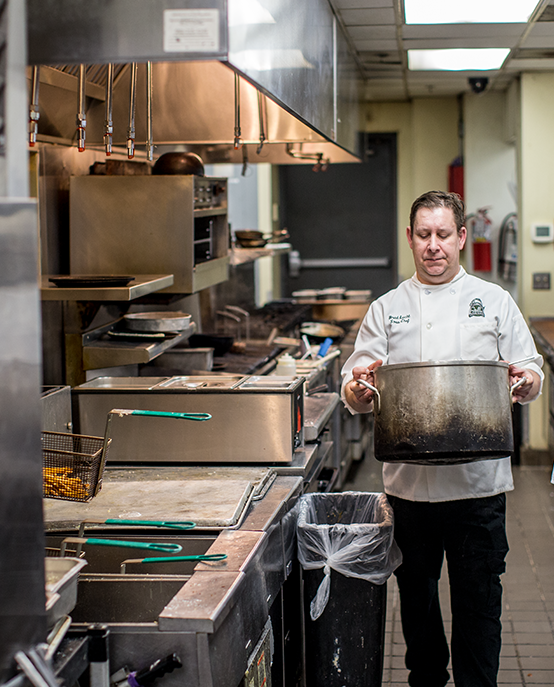
RESTAURANT COOKING OIL
DISPOSAL 101
Still managing your restaurant oil removal the old-fashioned way?
If you get jugs of fresh oil delivered on one truck and get grease removal and recycling from old fashioned “guy with a truck” renderers, it’s about time your oil management efforts caught up. To better understand your current processes, we assembled Cooking Oil Management 101, the basics of managing your restaurant’s cooking oil. Here, you can download cooking oil resources and learn how Total Oil Management will transform the way your kitchen works.
When it comes to restaurant cooking oil disposal, shuttling waste with oil caddies or buckets is outdated. One of the most dramatic process improvements that a restaurant can make is oil management. Take a look at this video to see if it reminds you of your oil management and disposal practices today.
Whether you call it grease removal, fryer oil recycling, frying oil disposal, waste cooking oil disposal, or restaurant oil removal, proper cooking oil management and collection can improve almost every aspect of your business. At Restaurant Technologies, we’re dedicated to enhancing safety, efficiency, sustainability, and food quality. That means you can experience better business operations and finances, and increased employee engagement simply by managing your cooking oil. Don’t get left behind; learn how to create a safer, smarter kitchen today.
Manage Oil to Minimize Costs
Getting the best return on oil investment and return on fried food costs are critical to sustaining your foodservice business. The good news is that most organizations have procedures in place to track basic oil spend and handling costs. But there’s still lots of room for error.

The breakdown happens during the traditional manual oil handling process.
A series of disconnected steps—including oil purchase and delivery through grease disposal and recycling—doesn’t offer insight into key oil metrics. These metrics can include oil usage over time, across locations, or within certain operating parameters. This leaves a gap where efficiencies and opportunities for training are missed, costing you time and money.
In addition, few operators have a good understanding of what oil handling costs in safety expenses. Though it’s not the operator’s fault since that information is usually held by the insurance company or the risk management department. However, these costs can add up to thousands of dollars per location per year. In fact, one study found that 60% of back of house (BOH) injuries were linked to cooking oil.
